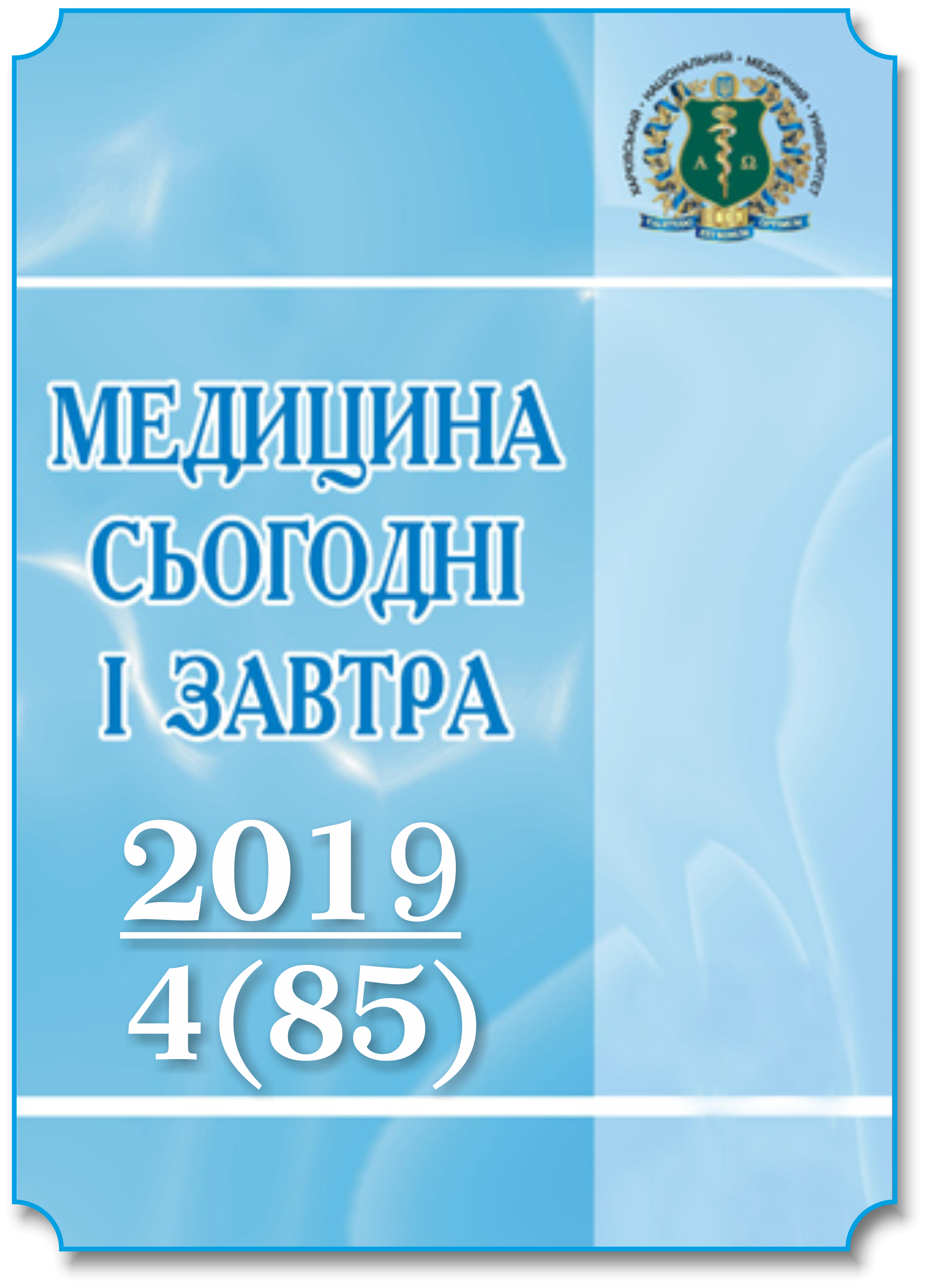Анотація
За результатами інфрачервоної спектроскопії ниркових каменів, отриманих у 59 пацієнтів із сечокам’яною хворобою, у складі зразків було ідентифіковано широкий спектр хімічних сполук. Із останніх у найбільшій кількості представлені вевеліт (моногідрат оксалату кальцію), гідроксилапатит та сечова кислота. Монофазні камені мали місце у 8,4 % хворих. Дво-, три- та чотирифазний склад сечових каменів визначено у 37,2; 42,3 та 11,8 % пацієнтів відповідно. Проведення аналізу сечових каменів, отриманих у результаті самостійного відходження або шляхом застосування хірургічних методів, за допомогою інфрачервоної спектроскопії сприятиме правильному вибору індивідуальної програми метафілактики сечокам’яної хвороби в різних пацієнтів.
Посилання
Ahmad F., Nada M.O., Farid A.B., Haleem M.A., Razack S.M.A. (2015). Epidemiology of urolithiasis with emphasis on ultrasound detection: a retrospective analysis of 5371 cases in Saudi Arabia. Saudi J. Kidney Dis. Transpl., vol. 26 (2), pp. 386–391.
Sorokin I., Mamoulakis C., Miyazawa K., Rodgers A., Talati J., Lotan Y. (2017). Epidemiology of stone disease across the world. World J. Urol., vol. 35, pp. 1301–1320.
Ma Rui-hong, Luo Xiao-bing, Li Qin, Zhong Hai-qiang (2017). The systematic classification of urinary stones combine-using FTIR and SEM-EDAX. International Journal of Surgery, vol. 41, pp. 150–161.
Daudon M., Dessombz A., Frochot V., Letavernier E., Haymann J.-Ph., Jungers P., Bazin D. (2016). Comprehensive morpho-constitutional analysis of urinary stones improves etiological diagnosis and therapeutic strategy of nephrolithiasis. C. R. Chimie, vol. 19, issue 11–12, pp. 1470–1491.
Heise H.M. (1997). Medical applications of infrared spectroscopy. Progress in fourier transform spectroscopy. Mink J., Keresztury G., Kellner R. (Ed.). Mikrochimica Acta Supplement (Vol. 14). Vienna: Springer.
Türk C., Neisius A., Petrik A., Seitz C., Skolarikos A., Thomas K. (2018). Guidelines on urolithiasis. European Association of Urology. Retrieved from http://https://uroweb.org/wp-content/uploads/EAU-Guidelines-on-Urolithiasis-2018.
Popescu (Pintilie) G.S., Ionescu I.,Grecu Rodica, Preda Anişoara (2010). The use of infrared spectroscopy in the investigation of urolithiasis. Revista Română de Medicină de Laborator, vol. 18, № 4/4, pp. 67–77.
Blanco Fr., Ortiz-Alías P., López-Mesas M., Valiente M. (2015). High precision mapping of kidney stones using μ-IR spectroscopy to determine urinary lithogenesis. J. Biophotonics, vol. 8, № 6, pp 457–465, DOI 10.1002/jbio.201300201.
Sekkoum Kh., Cheriti A., Taleb S., Belboukhari N. (2016). FTIR spectroscopic study of human urinary stones from El Bayadh district (Algeria). Arabian Journal of Chemistry, vol. 9, pp. 330–334.
Skolarikos A., Straub M., Knoll T., Sarica K., Seitz Ch., Petřík Al., Türk Chr. (2015). Metabolic evaluation and recurrence prevention for urinary stone patients: EAU Guidelines. European Urology, vol. 67, issue 4, pp. 750–763.
Ray E.R., Rumsby G., Smith R.D. (2016). Biochemical composition of urolithiasis from stone dust – a matched-pair analysis. BJU Int., vol. 118 (4), pp. 618–624.
Mandel N.S., Mandel I.C., Kolbach-Mandel A.M. (2017). Accurate stone analysis: the impact on disease diagnosis and treatment. Urolithiasis, vol. 45 (1), pp. 3–9, DOI 10.1007/s00240-016-0943-0.
Kanchana G., Sundaramoorthi P., Jeyanthi G.P. (2009). Bio-chemical analysis and FTIR-spectral studies of artificially removed renal stone mineral constituents. Journal of Minerals & Materials Characterization & Engineering, vol. 8, № 2, pp. 161–170.
Pak C.Y., Poindexter J.R., Adams-Huet B., Pearle M.S. (2003). Predictive value of kidney stone composition in the detection of metabolic abnormalities. Am. J. Med., vol. 115 (1), pp. 26–32.

